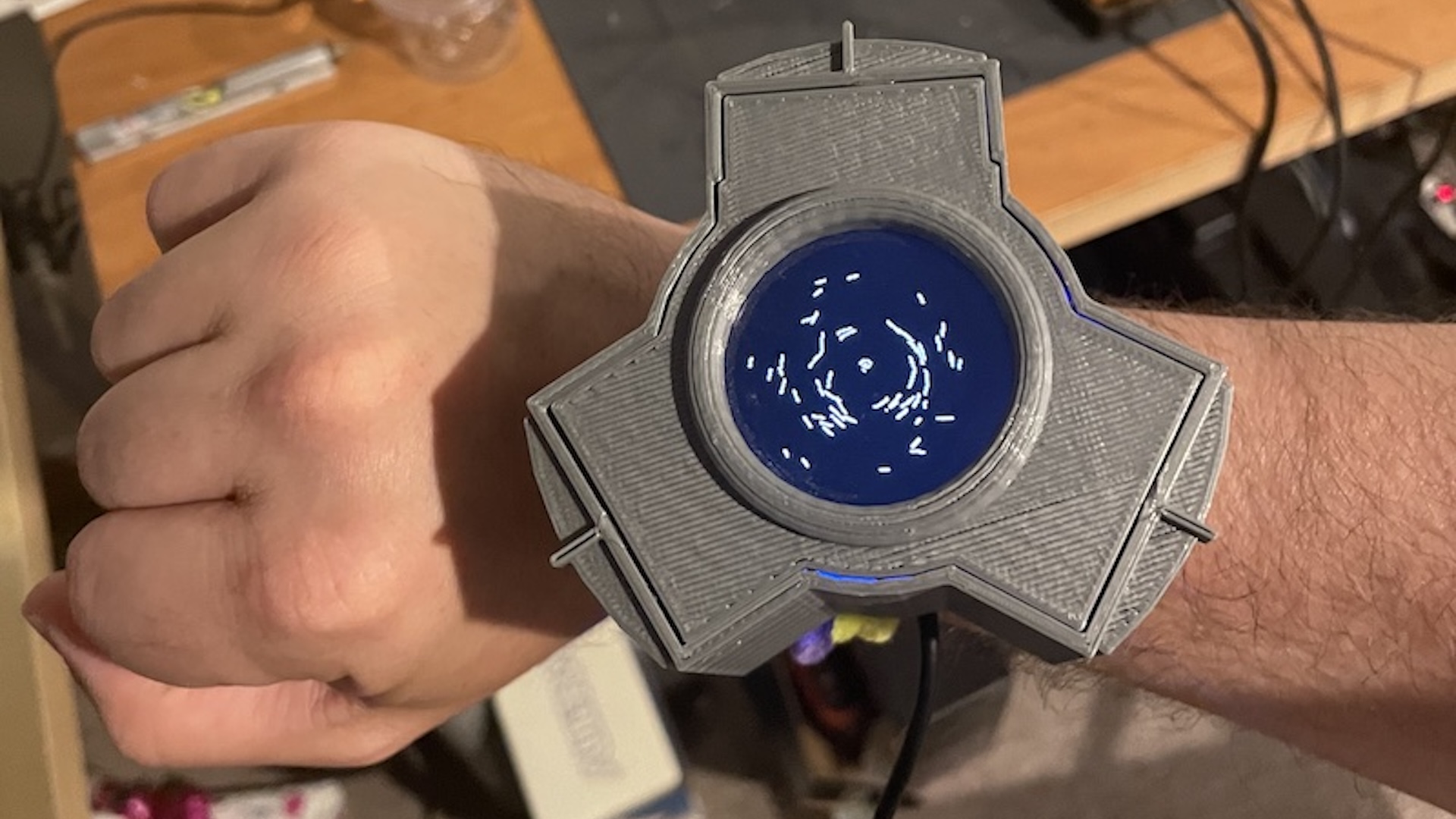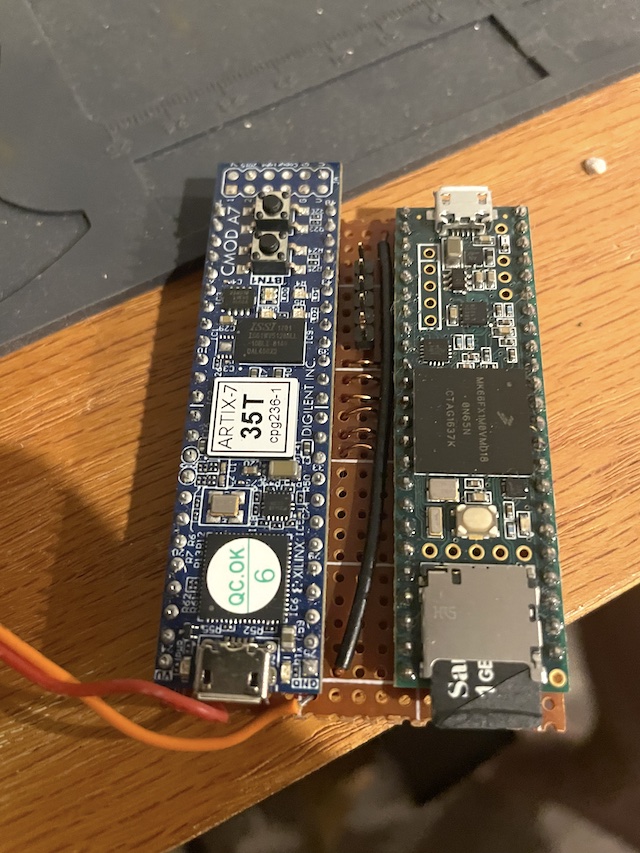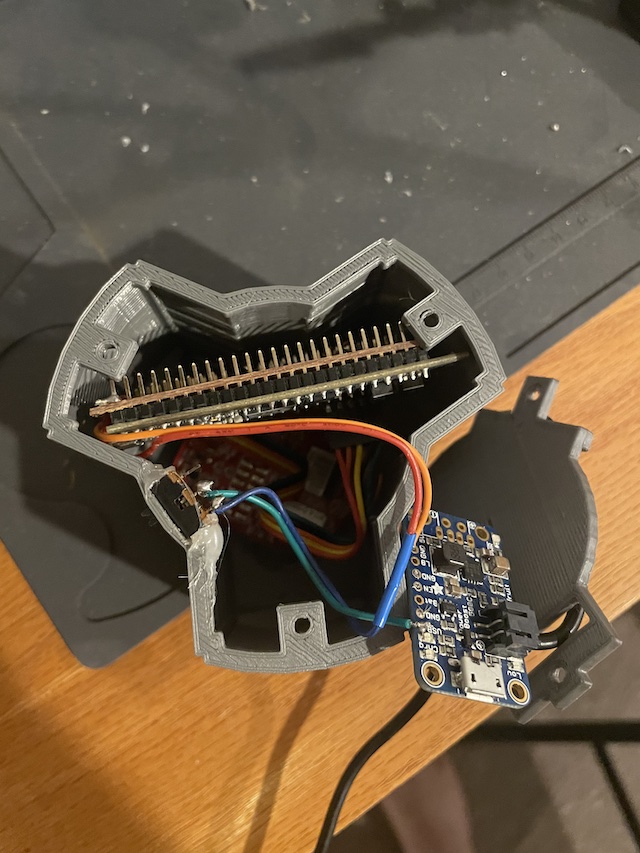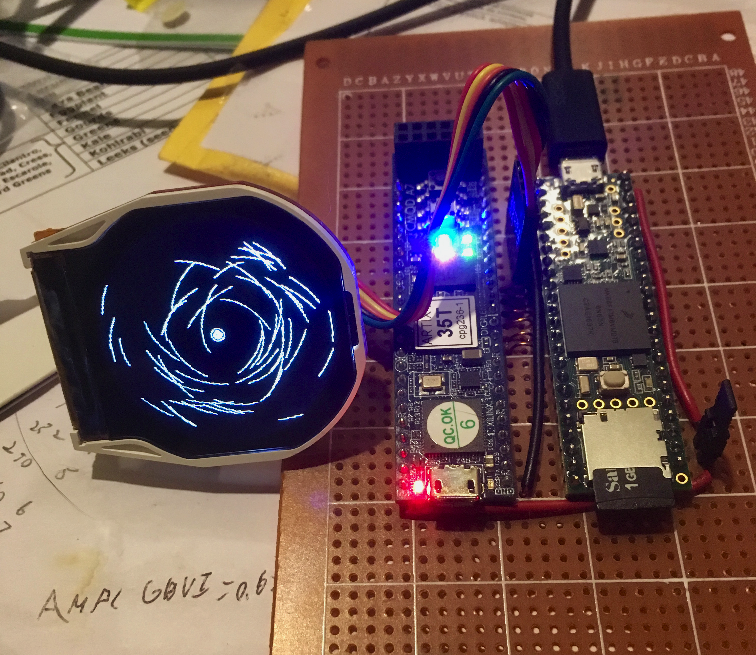
An electrical engineer who helps design supercomputers has built a miniaturized version of the Cray C90 that fits inside a wristwatch. The marriage of 3D printing, an OLED display, and an FPGA development board yielded a tiny Cray that he can wear on his wrist and, with great difficulty and concentration, use to tell time.

To build the 1/25-scale Cray C90 wristwatch, Chris Fenton designed a model of the Cray Y-MP C916 small enough to wear as a watch. He built it with a 3D printer, trimmed the required circuit boards to fit inside, and mounted the OLED display. It also has a battery with a built-in charger, and Fenton says the watch can accommodate a NATO-style wrist strap.
The system is run off a Diligent CMOD-A7 FPGA development board. This contains a Cray CPU core running at 105 MHz, the actual clock speed of Cray’s J90. The C90, mind you, runs at 244 MHz. The front-end processor is a Teensy 3.6 microcontroller, controlling reset signals and the SPI interface going into the Cray CPU. The Teensy MCU also drives the OLED display.


Next, Fenton needed software on the watch. Since it was a for-fun project and part of what he calls his “series in Cray-related computational necromancy,” the electrical engineer pretty much threw usefulness out the window. His work and interests have made him enjoy doing N-body gravity simulations, so that’s what he did with the Cray C90 superwatch. N-body gravitational simulations use mathematical formulas to demonstrate, in this case, how a planet and its moons interact gravitationally.
In Python, he wrote an n-body simulation of Jupiter and 63 of its moons. Mimicking Cray vector instructions, he developed a program for the watch that shows a free-running simulation of Jupiter and 63 of its moons orbiting the gas giant. The coordinates come from NASA’s Horizons system. The software displays each moon based on that data in the ecliptic plane around a circle designating Jupiter.

The maker says that using his supercomputer wristwatch “should be as incomprehensible as my motivation for creating it in the first place,” and it sounds like he hit that mark precisely. To actually tell the time on the wristwatch, you look at the positions of Jupiter’s moons. Because all of us know where those lunar bodies will be at particular times of the day...
The final product is programmable, and it looks like a miniature version of a Cray supercomputer. Fenton says it “pushes the boundaries of usefulness and complexity.” I would tend to agree, adding that I’d be nervous about wearing it — the watch appears to be several inches tall and I can see myself whacking it on doorframes every time I walk through one. Then again, I've got to admit it looks really cool.







